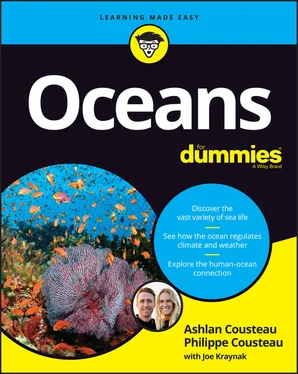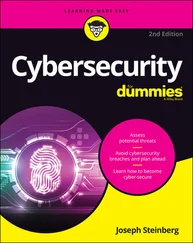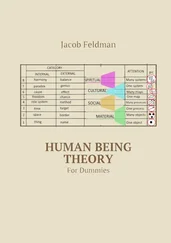Megazostrodon , the first true mammal appears, but unfortunately it’s as ugly as today’s possums … even though they are kinda cute.
Some mammals become aquatic (such as the castorocauda, a beaverlike critter) and some take to the air (such as the volaticotherium, similar to today’s flying squirrels, definitely cute).
Paravian dinosaurs appear, sporting feathers in place of scales (très chic), becoming, unbeknownst to them, ancestors of modern birds.
Large marine reptiles rule the seas as main apex predators (top of the food web with nothing big enough or mean enough to eat them). These marine reptiles include plesiosaurs and ichthyosaurs (which look like plesiosaurs without necks) and, later, pliosaurs (close cousins of ichthyosaurs) and marine crocodiles.
Diverse ecosystems develop complete with ammonites, gastropods, and fish.
Freshwater turtles put in an appearance.
The Jurassic period ended with a relatively minor extinction event (what a disappointment). Pangea continued to go to pieces, and sea levels began to rise, creating shallow seas in North America and Europe. These rising seas coupled with a change in climate caused by an increase in volcanic activity in the Pacific may have been the cause.
Life literally started to bloom during the Cretaceous period (145 to 66 million years ago), during which time flowers first appeared in the form of a genus of plants known as Archaefructus . Of course, plenty of other activity was going on as well:
Tyrannosaurids (early tyrannosaurus relatives) evolved.
Ceratopsians (those dinosaurs that look like rhinos) grew their head gear.
Several awesome dinosaurs stepped on stage, including: Ankylosaurs (sort of a cross between a horned toad and an armadillo), titanosaurs (the reptile version of a giraffe), hadrosaurs (hard to describe), and azhdarchids (giant flying pterosaurs).
Mosasaurs appeared, looking like a cross between a whale and an alligator.
Rays and modern sharks became common.
Hesperornithes (flightless birds that look like penguins but with longer necks) evolve.
Near the end of the Cretaceous period, species diversity was low and things were going to get worse with the Cretaceous-Paleogene (K-Pg) Extinction event, also known as the Cretaceous-Tertiary (K-T) Extinction, probably caused by the famous asteroid that killed all the dinosaurs. As the story goes, a mountain-sized asteroid hit the gulf of Mexico, spewing ash and blocking sunlight, causing a serious cold spell. Gases also affected the land and ocean resulting in the death of plants and collapse of ecosystems. This period is also responsible for some of the largest volcanic eruptions in history, lasting for tens of thousands of years (yikes!). All ichthyosaurs, plesiosaurs, and mosasaurs went extinct. Plankton populations collapsed, causing food webs to disintegrate. All in all, about 75 percent of the world’s species were wiped out.
Increasing sophistication in the Cenozoic era
And here we are, the era you’ve all been waiting for, the Cenozoic era (from 66 million years ago right up to today), the era that marks the rise of the mammals, including modern humans. In this section, we lead you through the Paleogene, Neogene, and the Quaternary periods.
So much happened during the Paleogene period that we’re going to break it down into its three epochs: the Paleocene, Eocene, and Oligocene.
The Paleocene epoch (from 60 to 55 million years ago) was pretty much devoid of large animals, as small creatures were rapidly evolving to fill empty niches, and the planet warmed so much that rainforests sprouted even at the poles. Here are some of the highlights:
Waimanu (a flightless water bird) claimed fame as the earliest penguin, while birds experienced a high degree of speciation (the evolutionary process by which populations evolve to become distinct species).
Mammals also diverged into the modern groups of monotremes (mammals that lay eggs), marsupials (mammals that carry their babies in pouches), and eutherians (mammals with placentas; for example: humans).
Early ungulate-like mammals appear ( ungulate means hooved).
Creodonts (carnivorous mammals) appear, generally belonging to one of the following two groups: galecyon (similar to dogs) and oxyaena (more like cats).
Plesiadapiforms (primate-like mammals that took advantage of a heavily forested Earth) make their appearance.
Most amphibians, freshwater crocodiles, and turtles survived the K-Pg Extinction event, but marine life took a long time to recover. The exception were small pelagic fish, which recovered quickly.
Ancestors of the megalodons (the huge sharks we introduced you to in Chapter 2) appeared, and ray-finned fish took over the oceans.
The Paleocene epoch ended with the Paleocene-Eocene thermal maximum about 55 million years ago, marked by a massive release of carbon into the atmosphere over the course of 20,000 to 50,000 years, which raised the average temperature on land 5 to 8 degrees Celsius (9 to 14.4 degrees Fahrenheit). Any way you measure it, that’s huge in terms of global warming, and the warming lasted about 200,000 years. The huge carbon surplus also caused ocean acidification, which killed a lot of marine species. (Acidification currently threatens ocean life, as explained in Chapter 21).
During the Eocene epoch (from 55 to 33.9 million years ago), Earth suddenly went from greenhouse to icehouse. One of the proposed causes of this dramatic change in climate is the Azolla event, during which blooms of azolla freshwater ferns in the Arctic Ocean sucked massive amounts of carbon dioxide out of the atmosphere. During this epoch:
The ice sheets expanded.
Deciduous trees, which drop their leaves in the fall, became favored over evergreens.
Early perissodactyls (odd-toed hoofed animals), artiodactyls (even-toed hoofed animals), and primates appear on land.
In the oceans, basilosaurids and ambulocetus (both ancestors of modern whales) appear, as well as the ancestor of sirenians (the politically correct name for sea cows such as manatees).
Most modern mammal orders appear, including bats, rodents, and proboscideans (mammals with long snouts such as wooly mammoths and elephants).
Giant snakes, such as the titanoboa, and giant flightless birds also make their entrance.
The Eocene ended with the Eocene-Oligocene Extinction event. This was a period of cooling, which may have been caused by another meteorite impact, causing a large turnover of mammalian and aquatic species in particular. During this time the archaeoceti (primitive whales) went extinct.
During the Oligocene epoch (from 33.9 to 23 million years ago), ice sheets began to form again at the poles, which lowered sea levels, and more recognizable life-forms emerged:
Grasslands flourished on land, making hoofed herbivores (such as rhinoceros and horses) more common, and ruminants (like cows) evolved to gobble up the grass.
Big cats, dogs, horses, camels, eagles, raptors, elephants, and deer appear.
Mastodons (the elephant’s nearly identical twin) and Paraceratherium, the largest land mammal of all time, wander the earth.
Old world monkeys split from new world monkeys, and our ape ancestors enter the picture.
Marine life mainly resembles what it is today, but as a whole, marine life diversity declines. Even so, during the Oligocene epoch, the ocean is home to baleen and toothed whales, desmostylians (vegetarian sea rhinos), and pinnipeds (seals, sea lions, and walruses).
Читать дальше












